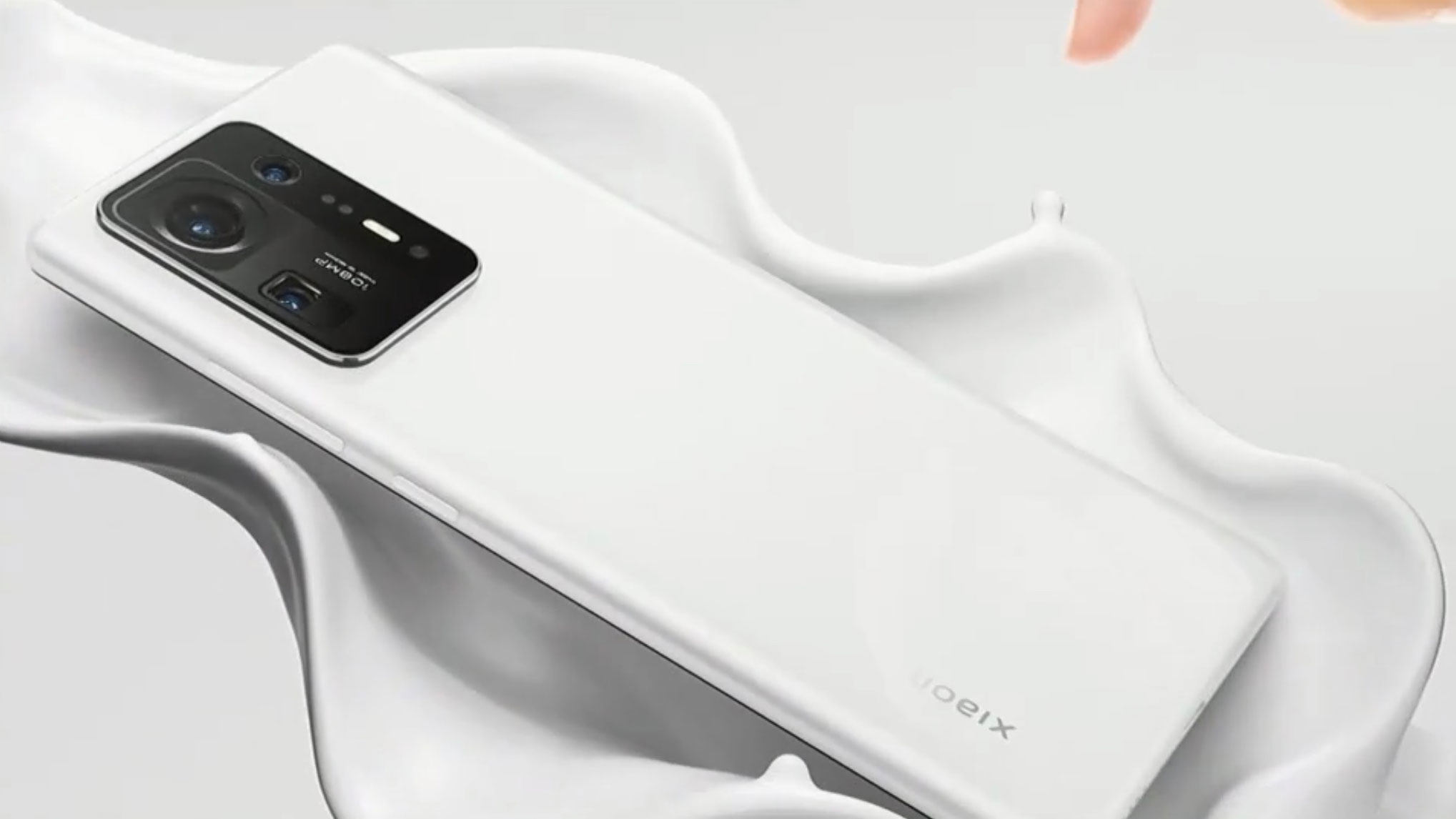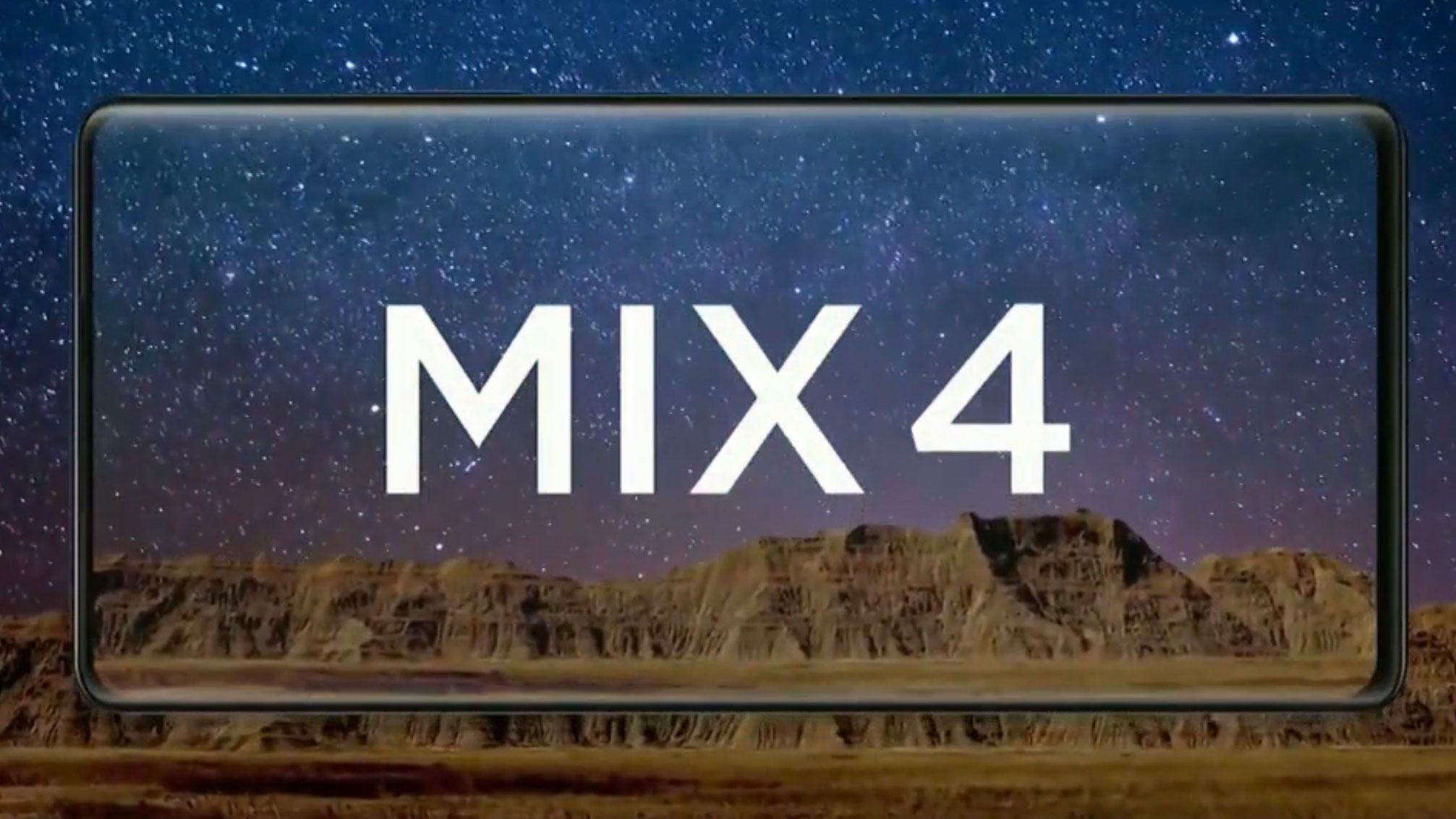Xiaomi Mi Mix 4 price, news and what you need to know about the new Xiaomi phone
The newest Xiaomi phone

The Xiaomi Mi Mix 4 might be the biggest late-2021 surprise - it's a Xiaomi flagship with an under-display selfie camera, super-fast wired powering and a surprisingly low price, but we weren't expecting it at all.
This is the follow-up to 2018's Mi Mix 3, and a lot has changed in three years for Xiaomi. It launched alongside the Mi Pad 5 at a big event in China, but sadly it sounds like it won't be launching globally, or at least in the UK.
The Mi Mix line is Xiaomi's attempt to create all-screen phones - that is, devices where the display isn't broken up by a big notch or bezel, and doesn't have a cut-out for the camera either. The Mix 3 had a pop-up segment hiding the front-facing camera, but the Mi Mix 4 does something different.
That's right, this is the third non-concept phone ever to use an under-display camera, following two ZTE phones, so the selfie-snapper is literally hidden under the screen. The Samsung Galaxy Z Fold 3 also has one, but that launched the day after the Mix 4.
That's not all, though - this seems to be a new premium smartphone with top specs in many departments. Well, most but not all, because the handset has some middling camera specs which seems to suggest this won't be an all-around top-end flagship.
Cut to the chase
- What is it? Xiaomi's newest smartphone
- When is it out? Curiously, this wasn't mentioned
- How much will it cost? Chinese prices promise a premium phone
Xiaomi Mi Mix 4 release date and price

The Xiaomi Mi Mix 4 debuted on August 10, however the event was China-only, like lots of Xiaomi's other launches. We already know the phone isn't going to launch in the UK, or perhaps anywhere outside China.
In China, the phone starts at CNY 4,999 for 8GB RAM and 128GB storage, and that price converts to around $770, £560, AU$1,050.
Sign up for breaking news, reviews, opinion, top tech deals, and more.
The company's prices tend to be higher in other regions though (except the US, where Xiaomi doesn't release its phones at all), so even if the Mi Mix 4 did get a global launch, it'd likely have a premium cost.
For higher specs there's also a CNY 5,299 (roughly $820, £590, AU$1,110) version with 8GB RAM and 256GB storage, a CNY 5,799 (about $890, £650, AU$1,220) model with 12GB RAM and 256GB storage, and a super-specced CNY 6,299 (around $970, £700, AU$1,320) device with 12GB RAM and 512GB storage.
One thing that wasn't mentioned was a release date, even in China. Stay tuned for that.
Design and display
As we've mentioned, the Xiaomi Mi Mix 4's main selling point is its 'CUP' as Xiaomi calls it, or 'camera-under-panel'. This is a selfie camera that sits below the panel at the top-center, and the LEDs are apparently smaller in this area to facilitate it.
The screen is a 6.67-inch AMOLED, which is a size Xiaomi seems quite taken with, and it supports HDR10+ and Dolby Vision. It has a 2400 x 1080 resolution, which is Full HD+ and pretty standard for a smartphone.
It's a screen that curves at the edges, though the tapering seems quite gentle so don't expect a Huawei Mate or Motorola Edge type slope.
The body is made of Corning Gorilla Glass Victus, a robust form of glass that a few smartphones (including lots of Xiaomi ones use). Sure, glass isn't exactly the hardiest material in the world, but this is the best version of it. There are gray, white and black versions of the device.
On the back, the phone has a square camera bump that looks like a mix of the Mi 11 and Mi 11 Ultra's panels - it sticks up a lot, but doesn't cover a huge area of the back. It doesn't seem Xiaomi got the memo in our Ultra review about how annoying thick camera bumps like this are.
The handset has a USB-C port but no 3.5mm headphone jack - no surprises there - but unlike many smartphones, which have a front, frame and back as three separate pieces, the Mi Mix 4 has a unibody design so they're all one continuous part.
This looks pretty premium, and likely makes the thing pretty hardy, though it'll likely bump that price up too.
Camera and battery

The front-facing camera on the Mi Mix 4 - that's the one hiding under the display - is a 20MP shooter. This kind of camera hasn't been great on other phones we've tested, so we're curious to see if Xiaomi has solved the problems they faced.
There are three rear cameras. The main one has a 108MP resolution and it's joined by a 8MP periscope snapper for 50x digital zoom, and a 13MP ultra-wide camera. Those camera specs are our best indication that the Mi Mix 4 isn't an all-around premium phone, as they pale compared to the Mi 11 Ultra.
The battery is 4,500mAh, which is a fair size, though the handset's battery life will depend as much on software optimizations as the size of that cell. Charging is impressive though, as the phone uses 120W, which is a spec very few devices reach. Expect the device to go from empty to full in 20 minutes or less.
Wireless charging is 50W, which is again super-fast, though Xiaomi phones have used that spec before, so it's not groundbreaking.
Specs and features

This sounds like a powerful phone, boasting the Qualcomm Snapdragon 888 Plus chipset which is the top Android processor available at time of launch.
An overheating issue with the Snapdragon 888 Mi 11 Ultra made it surprisingly weak if used for long periods of time, though, so we hope Xiaomi has got a fix for this problem or we might have a hard time making the most of the Mi Mix 4's chipset.
This seems likely, as Xiaomi spent quite a lot of time over the Mi Mix 4 launched detailing the built-in cooling systems, and it sounds like the phone will stay a few degrees centigrade cooler during intensive use and when charging.
As with all Xiaomi phones, the Mi Mix 4 will likely use MIUI, the company's fork of Android which comes with a few customization options and a different design to stock Android. MIUI is pretty buggy, but some fans find its customization and appearance make up for that.
- These are the best Xiaomi phones
James is a freelance phones, tablets and wearables writer and sub-editor at TechRadar. He has a love for everything ‘smart’, from watches to lights, and can often be found arguing with AI assistants or drowning in the latest apps. James also contributes to 3G.co.uk, 4G.co.uk and 5G.co.uk and has written for T3, Digital Camera World, Clarity Media and others, with work on the web, in print and on TV.